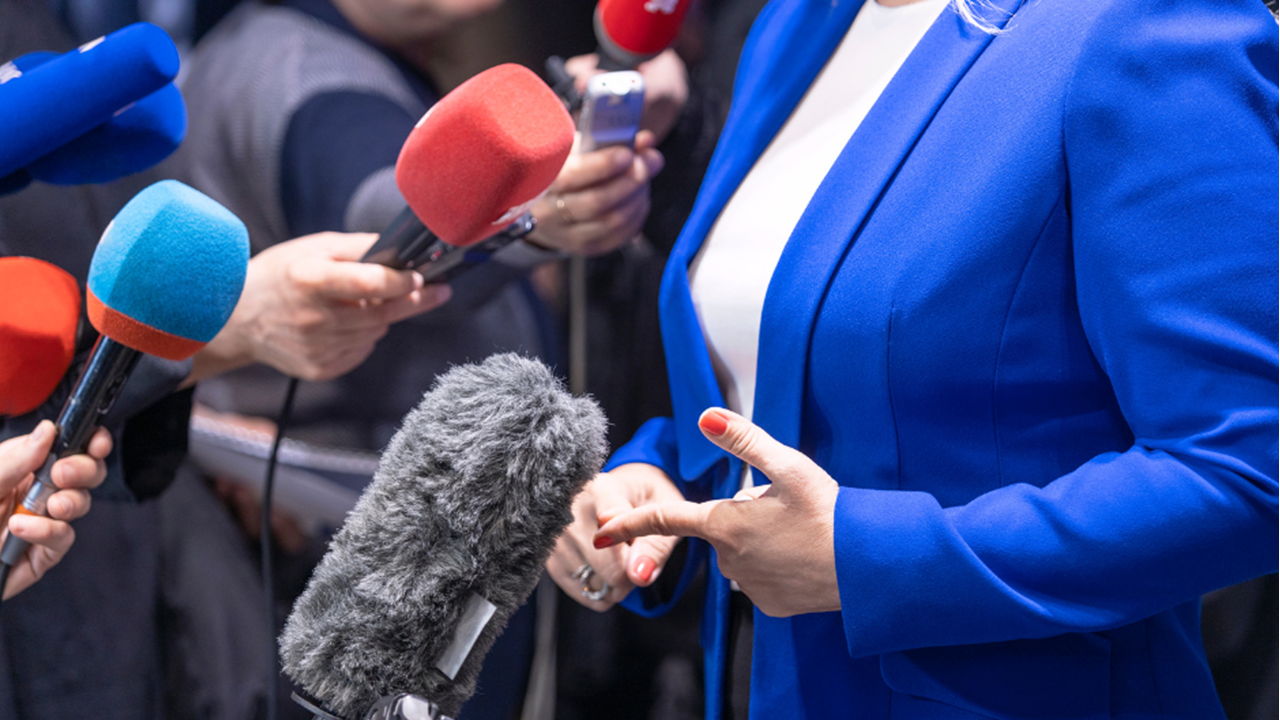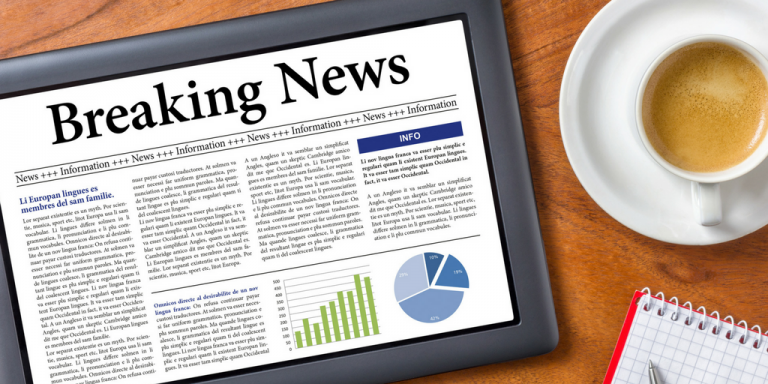
Key Takeaways
- The best PR responses to a crisis occur within 24- to 48-hours after the initial media firestorm.
- Product issues can generate the worst PR crises in the short-term. A failing product can generate 135x more negative coverage for a brand than during an average day.
- Data breaches and governance crises have the biggest long-term impact on reputation. Companies with those crises had the most negative media sentiment six months later.
- Social and political crises have relatively minor long term impacts. Stakeholders may ultimately judge companies on their commitment to core business goals over their social and political values.
PR crises can swiftly impact a company’s reputation and bottom line. Some crises can shed up to half of a company’s stock price for over 2 years.
Yet few companies are adequately equipped to respond to a crisis. It’s vital for PR teams to build concrete plans ahead of time, so what should they consider when building crisis communications plans?
A good crisis response first requires understanding the types of crises and how they unfold. While crises have similarities, they’re not all created equal. The media treats news around a product failure differently than a DE&I controversy, for example. Communicators need to be ready to respond to different crises differently.
What is a PR Crisis?
A PR crisis is an event that harms an organization’s reputation, credibility, or operations. In these moments, negative media coverage reaches new highs. PR teams often drop everything to focus on the problem.
PublicRelay reviewed 100+ crises across nearly 40 companies spanning over 10 industries. Pulling this data together gives insight into how a crisis could play out during the initial shock period of media reporting.
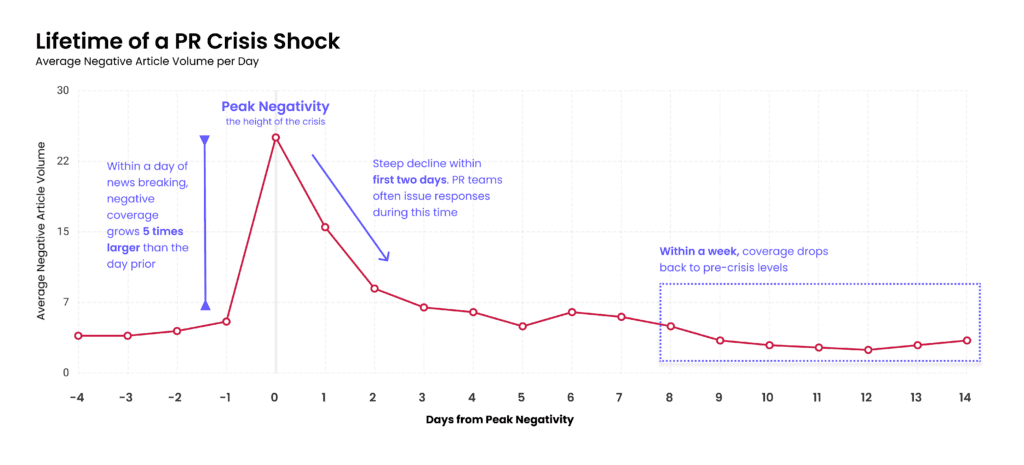
These crisis shocks have little warning. On average, crisis chatter grows rapidly in just a day to reach peak negativity, or when the media firestorm reaches its highest point.
On one hand, crisis shocks are generally short-lived. Negative coverage usually returns to pre-crisis levels in little over a week following a rapid decline within the first two days.
On the other hand, there is very little time to respond. The news cycle may move on after a few days, but public opinion cements quickly and can generate lasting reputational damage.
We found that the best PR responses occur within 24 to 48 hours after peak negativity. This window is when counter-messaging is most effective and communicators can mitigate the long-term reputational damage caused by the crisis.
What are the different types of crises?
Understanding how crises are different can also help predict how bad they will be. We grouped crises into three broad categories:
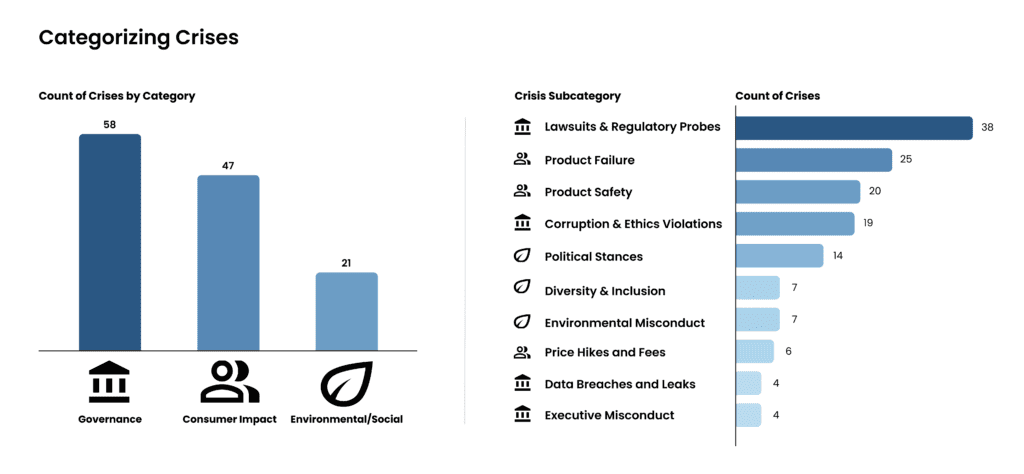
- Governance Crises: Triggered by lawsuits and regulatory investigations, these occur most often in the corporate landscape. Examples include misleading product claims, blocked mergers, and product safety lawsuits. They call into question a brand’s corporate integrity and compliance.
- Consumer Impact Crises: Issues like product failures, safety concerns, and price hikes fuel this type of crisis. They drive a customer’s experience with a brand. As a result, they generate headlines in mainstream media. Common examples include prolonged service outages and product recalls.
- Environmental and Social Crises: These crises are tied to a company’s socio-political standing. Examples include backlash over diversity issues and ecological damage. Crises like these often drive social media buzz and potential boycotts.
In the short-term: How bad is bad?
In the moment, some crises can be worse than others. To compare how bad crises are as they’re happening, we analyzed their peak negativity. We examined how bad the most negative day of a brand crisis was by comparing it to the brand’s negativity during an average day.
Crises like Product Failures and Safety lead to the most negativity. A failing product can generate 135x more negative coverage for a brand than during an average day. Product stories impact everyday news readers, so they quickly catch the attention of mainstream outlets.
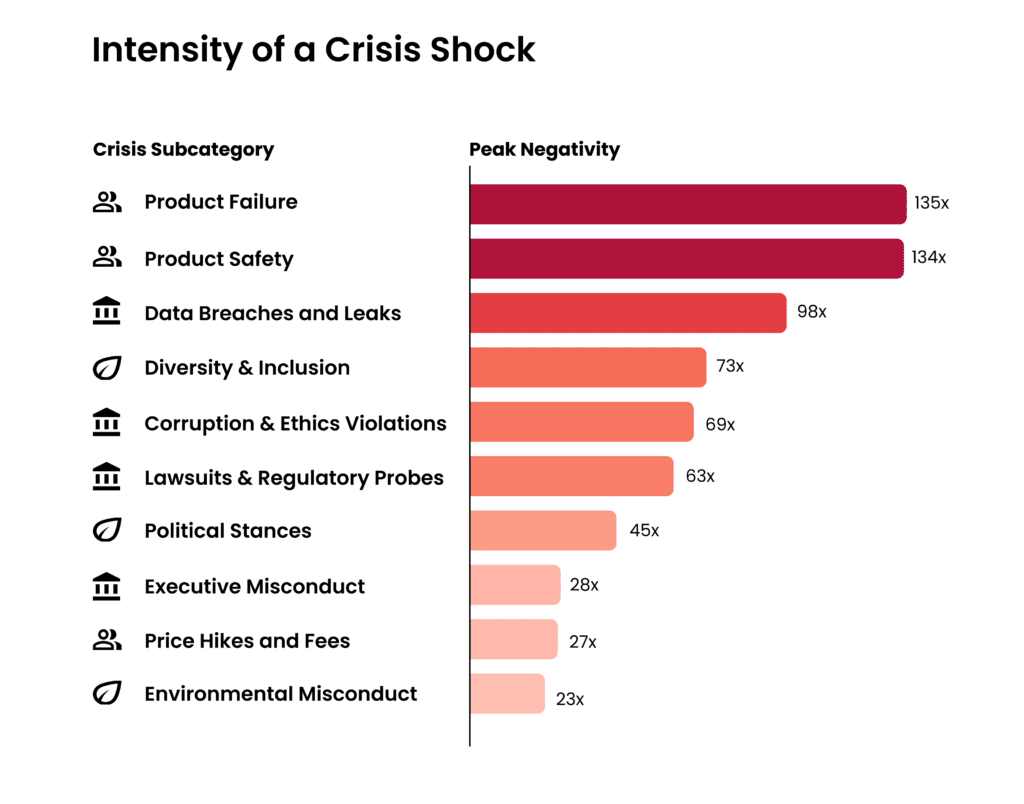
In contrast, issues like Executive Behavior and Environmental Misconduct only receive 20-30x more negative coverage than during a brand’s average day. Those crises are serious, but they may generate less news. Their impact on the public may be hazy and the media pickup can be limited to niche trade publications.
In the long-term: How will it affect my reputation?
Once the initial shock dissipates, the PR work isn’t over. Even when the media cycle moves on, the effects of a crisis can linger for months or years.
To understand the long-term effects of crises on brand reputation, we compared the average media tone of each brand six months before and after a crisis.
The results showed that some crises are easier to recover from others. Data Breaches stand out for their enduring negative impact on reputation. Companies with data breaches had the most negative media sentiment six months later. Leaks from hacks can generate panic and concern among key stakeholders. Data breaches also attract lawsuits and regulatory responses which draw out their lifespan.
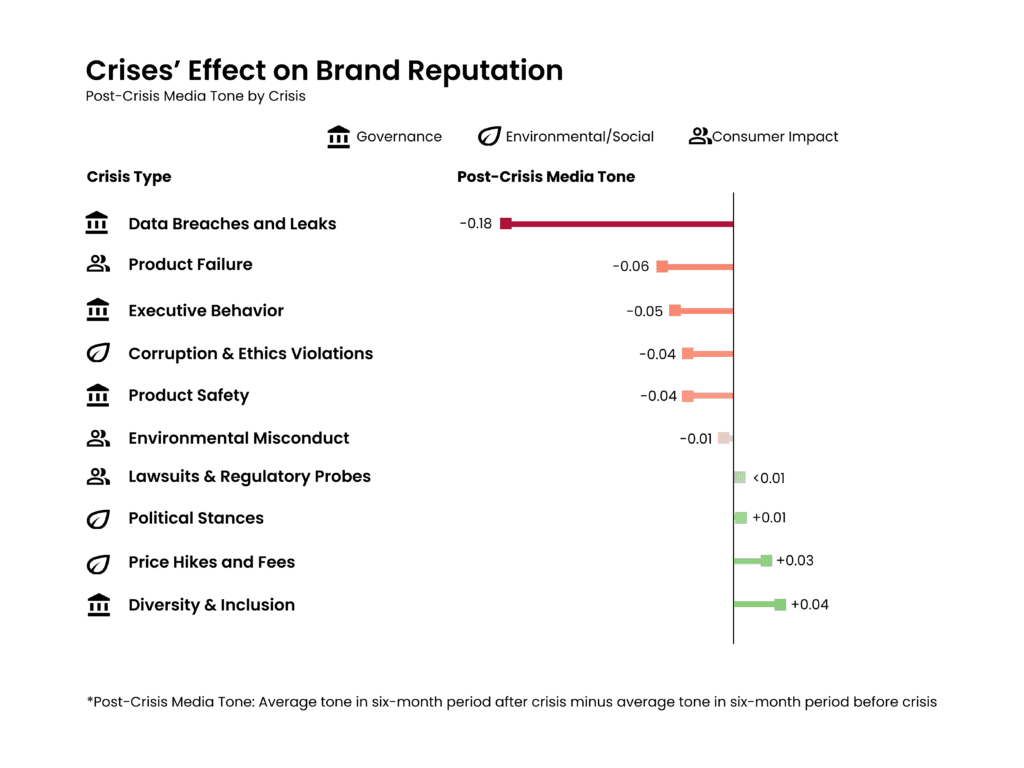
Similarly, governance crises that erode shareholder trust can have lasting repercussions on a company’s reputation. Executive Misconduct, for example, had a persisting negative impact. This was despite those crises seeing less coverage when they first occurred.
Notably, social and political crises are easier to recover from. Backlash to a company’s Political Stances or Diversity & Inclusion initiatives did not often generate long-term negative reputational impacts. Stakeholders may ultimately judge companies on their commitment to core business goals over their social and political values.
Understand the crisis to plan your response
Becoming familiar with the different types of PR crises is critical. Not every crisis is the same, and they each have different short-term or long-term effects.
Consider the types of PR crises that can affect your brand and examine their characteristics. Doing so can help you plan your response strategy and resourcing needs for each different type of PR crisis.
To learn more about our research on PR crises, contact us here.

